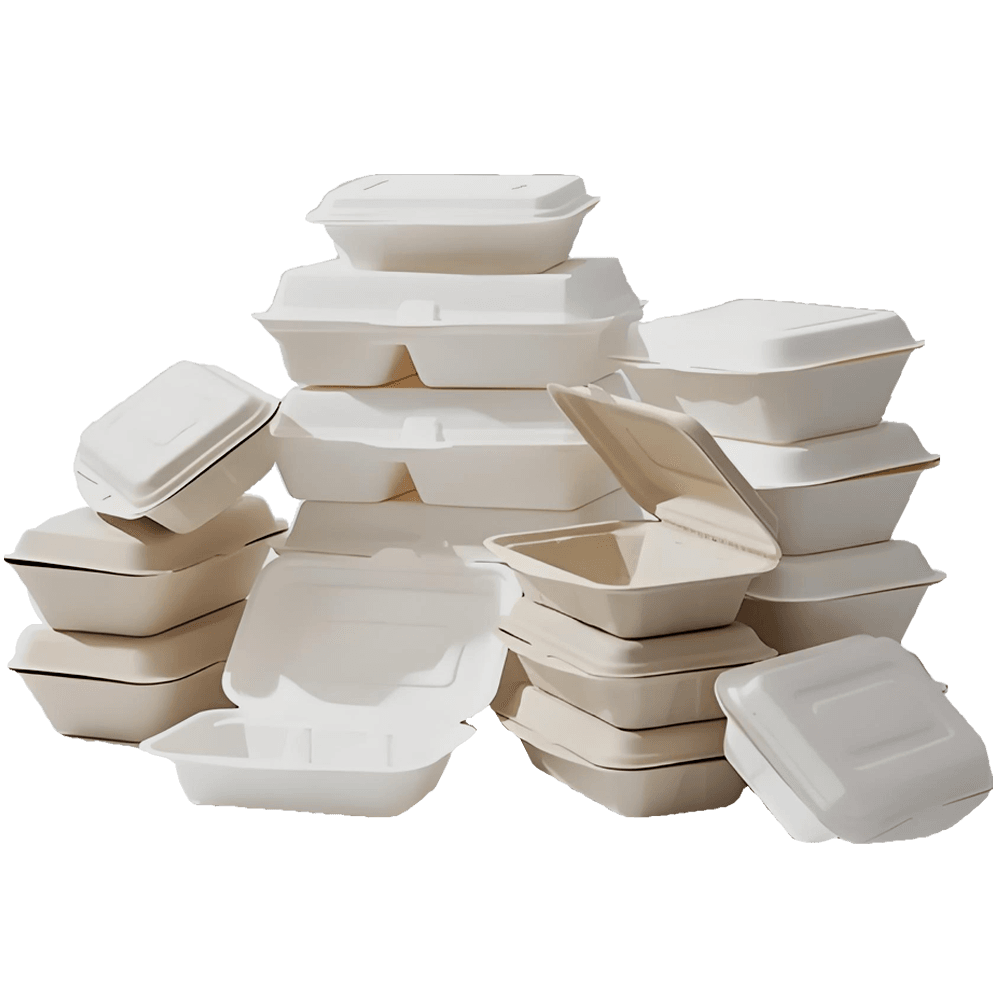Sugarcane Bagasse Tableware
(2025年)https://www.bioleaderpack.com/product-category/sugarcane-bagasse-tableware
In the quest for sustainable solutions in the food service industry, sugarcane bagasse tableware has emerged as a prominent alternative to traditional plastic products. Derived from the fibrous byproduct of sugarcane processing, bagasse tableware offers a combination of environmental benefits and practical functionality, making it an ideal choice for businesses aiming to reduce their ecological footprint.
Understanding Sugarcane Bagasse Tableware
Bagasse is the residual fiber left after extracting juice from sugarcane stalks. Traditionally considered waste, this material is now repurposed to create eco-friendly tableware, including plates, bowls, clamshell boxes, and trays. The transformation of bagasse into disposable tableware involves pulping the fibers, molding them into desired shapes, and then drying them to form sturdy products suitable for various food service applications.
Environmental Advantages
Renewable Resource: Sugarcane is a rapidly renewable crop, with a growth cycle of about 12 months. Utilizing bagasse for tableware capitalizes on an abundant byproduct, reducing the need for virgin materials and promoting sustainable resource use.
Biodegradable and Compostable: Bagasse products naturally decompose within 30 to 90 days in composting conditions, breaking down into organic matter without leaving harmful residues. This contrasts sharply with plastic items, which can persist in the environment for centuries.
Reduced Carbon Footprint: The production of bagasse tableware emits significantly less carbon dioxide compared to plastic manufacturing. Additionally, since bagasse is a byproduct, its utilization aids in waste reduction and contributes to a circular economy.
Functional Benefits
Durability: Bagasse tableware is designed to withstand both hot and cold foods, offering a sturdy alternative to flimsy plastic or paper counterparts.
Microwave and Freezer Safe: These products can safely be used in microwaves and freezers, providing versatility for various food storage and heating needs.
Leak and Cut Resistant: The inherent strength of bagasse fibers ensures that the tableware is resistant to leaks and cuts, making it suitable for a wide range of culinary applications.
Comparative Analysis with Other Eco-Friendly Alternatives
While materials like polylactic acid (PLA) and bamboo are also used for sustainable tableware, bagasse offers distinct advantages. Unlike PLA, which requires specific composting facilities, bagasse products can decompose in natural compost settings. Additionally, bagasse production does not necessitate additional agricultural resources, unlike bamboo, which requires dedicated cultivation.
Market Adoption and Consumer Perception
The global shift towards sustainability has led to increased adoption of bagasse tableware in various sectors, including hospitality, catering, and retail. Consumers are becoming more environmentally conscious, and businesses are responding by integrating eco-friendly products into their operations. This trend not only enhances brand image but also aligns with regulatory movements aimed at reducing plastic waste.
Conclusion
Sugarcane bagasse tableware represents a harmonious blend of environmental responsibility and practical utility. By choosing bagasse products, businesses can significantly reduce their environmental impact while providing high-quality, functional tableware to their customers. As the demand for sustainable solutions continues to grow, bagasse tableware stands out as a viable and responsible choice for the future of food service.
Frequently Asked Questions (FAQs)
What is sugarcane bagasse?
Sugarcane bagasse is the fibrous residue remaining after the extraction of juice from sugarcane stalks.
How long does bagasse tableware take to decompose?
Under composting conditions, bagasse tableware typically decomposes within 30 to 90 days.
Is bagasse tableware safe for hot foods?
Yes, bagasse tableware is designed to withstand high temperatures, making it suitable for hot foods and liquids.
Can bagasse products be used in microwaves?
Yes, bagasse tableware is microwave-safe, offering convenience for reheating food.
Are there any certifications for bagasse tableware?
Reputable manufacturers often obtain certifications such as ASTM D6400 or EN13432, indicating compliance with compostability standards.
- «前のできごと |
- 次のできごと»
- このできごとのURL:


コメント